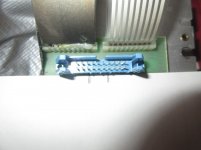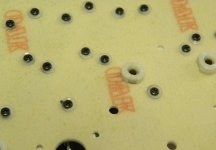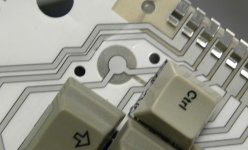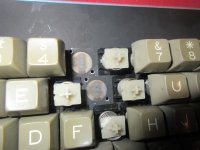NutmegCT
Experienced Member
Here we go!
Pins 1 and 20 are indeed connected.
But (!), pins 6 and 14 (the 3rd and 7th on the bottom row) are connected also. Continuity established with no keys pressed.
Photo, with the two bad pins marked:

Could someone please tell me what key that would correlate to? I think it's T. I'm new to the matrix game, and don't want to mess something else up by dis-assembling the wrong part(s). I've got the keycap off, but I'd also appreciate knowing how to take that key apart, and what I should be looking for.
Thanks.
Tom M.
Pins 1 and 20 are indeed connected.
But (!), pins 6 and 14 (the 3rd and 7th on the bottom row) are connected also. Continuity established with no keys pressed.
Photo, with the two bad pins marked:

Could someone please tell me what key that would correlate to? I think it's T. I'm new to the matrix game, and don't want to mess something else up by dis-assembling the wrong part(s). I've got the keycap off, but I'd also appreciate knowing how to take that key apart, and what I should be looking for.
Thanks.
Tom M.
Last edited:







